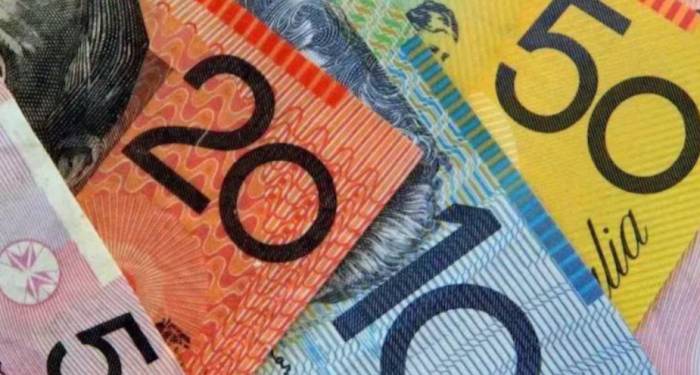Introduction
Interest Rates Unchanged, Minimal Market Fluctuations
Continued Inflation, Yet Hike on Hold
Weak Signs of Interest Rate Hike by the Federal Reserve
Time to Adjust Investment Directions
Although inflation in Australia re-emerged in August, and voices calling for an interest rate hike increased in the market, the Reserve Bank of Australia (RBA) still decided to keep the interest rates unchanged yesterday, causing the Australian dollar to fall accordingly.
What will be the future trajectory of the Australian dollar?
Will Australia raise interest rates again?
Where will Australia's economy and markets head next?
Interest Rates Unchanged, Minimal Market FluctuationsUpon reviewing the latest interest rate decision released yesterday, it comes as no surprise that Australia's interest rates remain at 4.1%.
Previously, there was much speculation suggesting that the Reserve Bank of Australia might raise interest rates again before November. However, this decision does not clearly indicate an imminent rate hike.
As we have mentioned before, the simplest way to understand shifts in the stance of the Reserve Bank of Australia is to compare the statements following this month's and last month's interest rate meetings. You will find many similarities.
Advertisement
For instance, certain aspects regarding the current monetary policy of the Australian central bank, its future outlook, and the main factors determining future monetary policy; views on inflation returning to the target range by 2025; discussions on the downward and upward risks of domestic inflation; descriptions of concerns about the Chinese economy; and descriptions of the Australian labor market remaining busy.
There have been no changes in the above areas. The only minor change worth noting is that the latest indicators seem to show slight signs of an economic recovery in Australia. However, this change is unlikely to become a core factor for the Reserve Bank to raise interest rates in November unless there is a sudden and uncontrollable signal of inflationary pressure.
Australian inflation continues, with a temporary pause in rate hikes.
We know that before the November interest rate meeting, there will be a quarterly inflation report. But personally, I believe that the current state of inflation is unlikely to be a driving force for further rate hikes.
Why?
If we look at the inflation data for August, although the Consumer Price Index (CPI) increased from 4.9% in July to 5.2%, the rise in inflation was almost entirely driven by oil prices.
Apart from the significant increase in oil prices, the majority of commodity price indices are trending downward, especially those for some service sector goods.So, the core inflation that the Reserve Bank of Australia (RBA) is particularly concerned about decreased in August.
Similarly, despite positive growth in Australian retail sales in August, the growth rate of 0.2% was still lower than the expected 0.4%.
In the category data, we can also see that the retail growth of the vast majority of goods has slowed down, or even declined, with only the so-called "other retail" showing a significant increase in retail sales, but it is of little significance.
Therefore, whether from the perspective of inflation or retail, Australia's economy has shown a trend of weakening consumer willingness and purchasing power. As a result, the long-term trend of overall commodity prices is downward, which is consistent with the RBA's view. This also implies that the possibility of the RBA raising interest rates this year is not high.
The market quickly realized this, so after the news was announced yesterday, the Australian dollar exchange rate fell sharply.
The signs of the Federal Reserve raising interest rates are not strong.
On the other side of the planet, the Federal Reserve still maintains a hawkish stance, leading the market's expectations for a Fed rate hike to be much higher than the expectations for an RBA rate hike.
But I personally believe that the Federal Reserve may take more measures to intervene in the market and exert pressure, rather than necessarily using the means of raising interest rates.

Why do I say this?
As we all know, the pace of interest rate hikes by central banks around the world is nearing an end. If the Federal Reserve announces another rate hike, its role in curbing inflation and the market may not be better than the state of suspense that has been hanging in the balance.Australian Digest Market Bears, Time to Adjust Investment Direction
In summary, what is the reality we face?
We have observed a recent decline in the stock market, partly due to the belief held by many that once central banks cease interest rate hikes, a rate cut cycle will ensue within half a year. However, we believe this judgment to be inaccurate.
Our fundamental view is that central banks will maintain relatively high interest rates over the next 6 to 12 months, without raising them to an extremely high level to strangle the market, and it is unlikely that they will quickly enter a rate cut cycle after the last hike. During this period, the market will continue to digest the bearish factors of economic downturn and the fundamentals of certain industries.
Therefore, there is no need for pessimism.
On the contrary, we need to re-examine our asset allocation and investment direction in this new environment.
Hence, we plan to hold three public seminars next week in Melbourne, Sydney, and Brisbane, respectively. The seminars will cover topics such as the future interest rate environment, the current state of the Australian economy, the development directions of different industries, and the Australian dollar exchange rate.
The analysis, views, or other information in this article are market commentary/general information and do not constitute trading advice; they are provided for reference only. Any forward-looking statements are not guarantees or representations of future performance, and should not be relied upon excessively. When making any investment, consider the applicability of the information contained in this article based on your personal investment objectives, financial situation, or personal needs, make decisions cautiously, and bear the risks yourself.